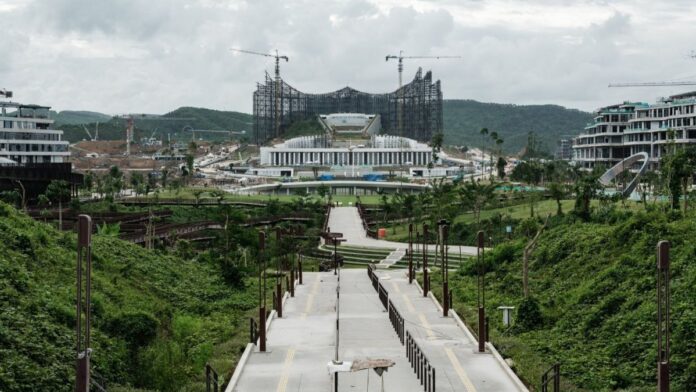Infrastructure Development in IKN Pays Attention to Ecological Balance
Jakarta – The development of the Indonesian Capital City (IKN) continues to be the government’s main concern, especially in efforts to create a sustainable modern city. With the concept of “Forest City” which prioritizes a balance between infrastructure development and environmental preservation, this project is a concrete example of the government’s commitment to environmentally friendly development.
The President of the Republic of Indonesia, Prabowo Subianto, emphasized that the development of the IKN is not only focused on technological advances and modern facilities, but also on protecting local biodiversity and ecosystems.
“IKN is designed as a city that integrates humans with nature. Every step of development is designed to ensure that the surrounding ecosystem is not disturbed, but rather maintained and restored,” said President Prabowo
The IKN development project located in East Kalimantan covers an area of around 256,000 hectares, with 75% of the total area designed to remain a green area. This project is part of the IKN infrastructure development principle that is oriented towards the environment and sustainability.
To support the sustainable vision, infrastructure development in the IKN adopts efficient and environmentally friendly green technology. For example, government buildings are designed with a net-zero carbon concept that utilizes renewable energy, such as solar power and biomass.
In addition, an important component in the development of the IKN is the restoration of ecosystems that have been damaged by human activities.
In this process, the government is collaborating with various environmental organizations, both local and international, to carry out forest rehabilitation and wildlife conservation. The area around the IKN is known as a habitat for various protected species, such as Bornean orangutans and hornbills. For this reason, development is designed in such a way as not to disrupt the ecological corridors that are the movement routes for these animals.
Deputy Minister of Public Works (PU), Diana Kusumastuti, conducted a review of the construction of a tunnel or wildlife crossing located on the Indonesian Capital Access Toll Road (IKN) on Section 2B of the Kariangau-Simpang Tempadung segment, East Kalimantan (Kaltim). Deputy Minister Diana emphasized the importance of maintaining the balance of the ecosystem and ensuring the sustainability of wildlife in the area.
“This is a positive step for nature conservation and sustainable ecosystems. However, I want to ensure the safety and quality of the bridge materials,” said Diana.
This animal crossing uses Corrugated Steel Plate material and is specially designed to support the movement of wild animals, such as sun bears. There are four animal crossing points along the toll road, with dimensions of 80.77 meters long, 25.12 meters wide, and 12.74 meters high. To resemble the natural habitat, the crossing area is also planted with green vegetation.
During her visit, Deputy Minister Diana also monitored the progress of the construction of the Dirgahayu Bridge located in Section 5A of the IKN Access Toll Road. Philosophically, the design of the Dirgahayu Bridge reflects the spirit of Indonesian independence, especially in supporting efforts to improve people’s welfare.
The construction of the Dirgahayu Bridge is targeted for completion in December 2024 and is expected to become an icon of modern infrastructure that is in line with the principles of sustainability in the IKN.
The bridge has an overall length of 340 meters, with a main span of 260 meters and approach spans at both ends of 40 meters each. The bridge structure combines steel box elements, reinforced concrete, and prestressed box girder decks.
